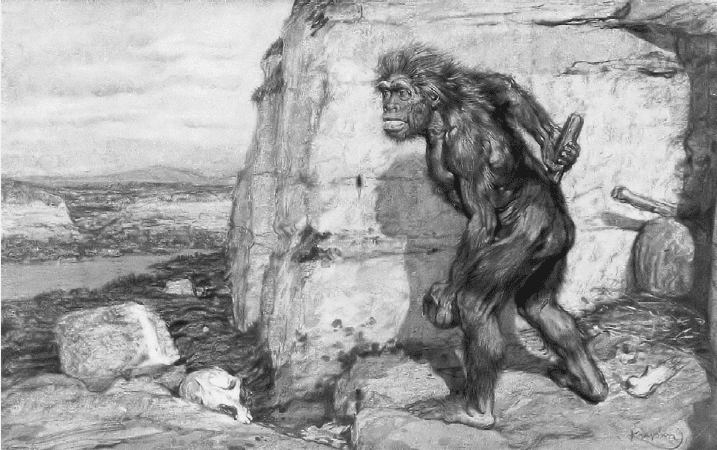
In 1908, the brothers Amadee and Jean Bouyssonie found the most complete Neanderthal skeleton to date in a small cave near La Chapelle-aux-Saints, in France. The specimen, known as the “Old Man of La Chappelle”, quickly became famous, with paleontologists using the limited tools and knowledge of the time envisioning Neanderthals as brutish, hairy, hunchbacked gorilla-like beasts. To this day, many people carry this negative stereotype with popular culture often portraying Neanderthals as bent over and stupid brutes.
However, recent evidence suggests that Neanderthals were anything but stupid. They employed sophisticated tools and complex cultural practices such as ritualistic burials, cave paintings, and symbolistic jewelry. We also now know that Neanderthals walked upright — it’s just that the Old Man of La Chappelle’s slouching posture and bent knees were owed to his poor health. Studies showed the Neanderthal, who was around age 40 at the time of his death about 50,000 years ago, suffered from advanced osteoarthritis.

In fact, a new study found the Neanderthal man was likely plagued by a range of afflictions, including brucellosis. The disease is still widespread today and is generally acquired when we come in direct contact with an infected animal, typically after eating or drinking some contaminated animal product.
According to Dr. Martin Haeusler, an expert in internal medicine at the University of Zurich and lead author of the new study, this is perhaps the earliest example of a spillover event — a disease or infection that jumped from an animal to a human. A spillover event is what, for instance, caused the COVID-19 pandemic, after the SARS-CoV-2 virus was transmitted from bats to humans. The dreaded Ebola virus that has been ravaging Africa for decades also originates from bats.
Brucellosis causes fever, muscle pain, night sweats and can last for weeks to years, depending on the severity of infection and availability (or lack thereof) of treatment. More serious symptoms of brucellosis include epididymitis/orchitis, infertility, stillbirths, and abortions. “This could have represented an important aspect of health in Neanderthals, or more generally in Palaeolithic humans,” the researchers wrote in their study.
The researchers figured out the Old Man of La Chappelle must have caught the zoonotic disease when they examined the fossils and concluded not all the deformities in the man’s spinal column and hip joint could be explained by the wear and tear caused by osteoarthritis.
“Rather, we found that some of these pathological changes must be due to inflammatory processes,” Haeusler told CNN.”A comparison of the entire pattern of the pathological changes found in the La Chapelle-aux-Saints skeleton with many different diseases led us then to the diagnosis of brucellosis.”
Previously, evidence of brucellosis was found in Bronze Age human skeletons dating back to around 5,000 years ago, but the new evidence was much older by a significant order of magnitude.
Given the age of the Neanderthal man, the researchers believe he must have had a mild form of the disease, which he likely caught by consuming an infected animal raw. It could have been a wild sheep, goat, reindeer, or bison, all of which were part of the Neanderthal’s diet. It’s very unlikely the disease was caused by eating mammoth or woolly rhinoceros, regularly hunted Paleolithic animals that likely didn’t get brucellosis based on what we know about the living relatives of these extinct species.
In an earlier study published in 2019, Haeusler and colleagues found the Neanderthal man also lost most of his teeth and must have been fed and taken care of by other members of his group, which can be seen as indirect evidence of Neanderthal compassion.
The new findings appeared in the journal Scientific Reports.









